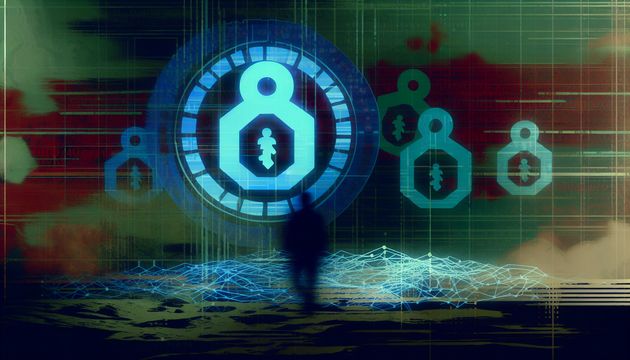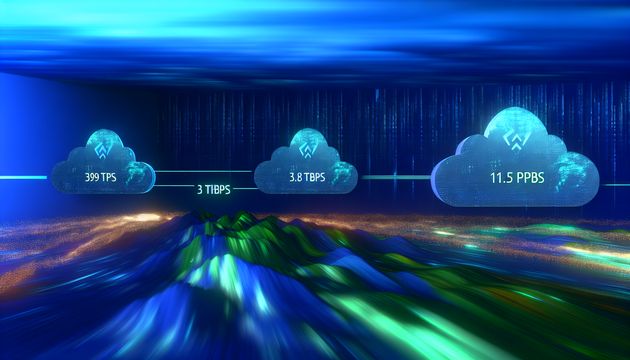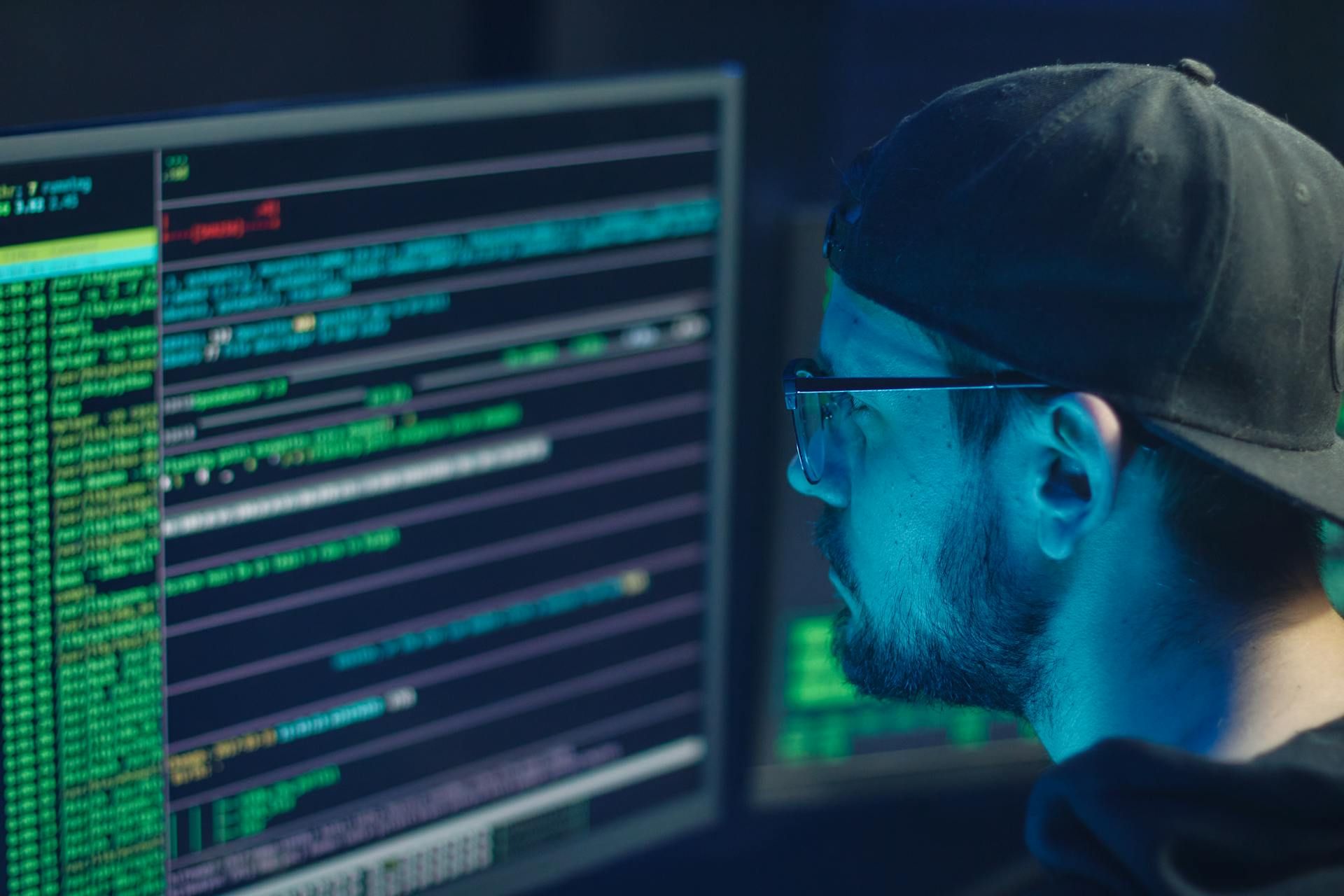
Emerging InfoSec Trends to Watch in 2025
As we approach 2025, the landscape of information security (InfoSec) is rapidly evolving, driven by technological advancements and the increasing sophistication of cyber threats. The integration of artificial intelligence (AI) into cyber operations has transformed the threat landscape, enabling more personalized and evasive attacks. AI-powered phishing, malware, and ransomware are becoming more prevalent, challenging traditional security measures (Microsoft Security Blog). Simultaneously, the advent of quantum computing presents both opportunities and challenges, threatening to obsolete current cryptographic systems while also offering new avenues for secure communications (Deloitte Tech Trends).
Cloud security remains under scrutiny as organizations increasingly rely on cloud services, expanding the attack surface and necessitating robust security frameworks. The shift towards secure-by-design principles and the adoption of AI and automation in threat detection are critical in mitigating these risks (Nature Quantum Information). Meanwhile, ransomware continues to evolve, with Ransomware-as-a-Service (RaaS) models lowering the barrier to entry for cybercriminals and introducing complex extortion tactics (Info-Tech Research Group).
Geopolitical tensions further complicate the InfoSec landscape, as nation-state actors engage in cyber espionage and hybrid warfare, exploiting supply chain vulnerabilities and leveraging cyber-enabled disinformation campaigns (Council on Foreign Relations). As these trends converge, organizations must adopt a proactive and resilient approach to cybersecurity, integrating advanced technologies and fostering global collaboration to safeguard their digital assets.
The Rise of AI-Powered Cyber Threats
Advanced AI-Driven Phishing Attacks
AI-powered phishing attacks are becoming increasingly sophisticated, leveraging machine learning to craft highly personalized and convincing messages. Unlike traditional phishing attempts, which often rely on generic templates, AI can analyze vast amounts of data, such as social media profiles, email patterns, and online behavior, to create targeted phishing campaigns. These attacks exploit human psychology and trust, making them harder to detect.
For instance, AI tools can generate phishing emails that mimic the tone, style, and language of legitimate communications. Recent industry reports highlight that AI-enhanced phishing scams are expected to rise sharply, with businesses reporting a significant increase in such attacks over the past two years. This trend underscores the need for organizations to adopt advanced AI-based detection systems to counteract these threats.
AI-Generated Malware and Ransomware
AI is being weaponized to create more adaptive and evasive malware. Unlike traditional malware, AI-generated malware can learn from its environment and modify its behavior to avoid detection. This includes dynamically changing its code to bypass antivirus software or exploiting zero-day vulnerabilities.
AI-powered ransomware is another growing concern. These programs can autonomously identify high-value targets within an organization, encrypt critical data, and demand ransom payments in cryptocurrencies. Recent cybersecurity analyses indicate that the use of AI in ransomware attacks has increased significantly, with predictions that this trend will accelerate in the coming years.
Deepfake Technology in Cybercrime
The rise of deepfake technology has introduced a new dimension to cyber threats. Deepfakes, which use AI to create realistic but fake audio, video, or images, are being used for fraudulent activities such as impersonating executives in business email compromise (BEC) scams.
For example, cybercriminals have used deepfake audio to mimic the voices of CEOs, instructing employees to transfer funds to fraudulent accounts. Industry reports suggest that deepfake-enabled scams have caused substantial financial losses globally, with projections suggesting a significant increase in the near future.
AI-Augmented Botnets
Botnets, networks of compromised devices, are becoming more potent with the integration of AI. AI-powered botnets can autonomously identify and exploit vulnerabilities in connected devices, spreading malware more efficiently.
These botnets are also being used for large-scale distributed denial-of-service (DDoS) attacks, overwhelming targets with traffic to render their services unavailable. Unlike traditional botnets, AI-augmented botnets can adapt their attack strategies in real-time, making them more resilient and effective. Current cybersecurity forecasts predict that AI-driven botnets will account for a majority of DDoS attacks in the coming years.
AI in Social Engineering Attacks
Social engineering attacks, which manipulate individuals into divulging confidential information, are being enhanced with AI. By analyzing social media activity, communication patterns, and behavioral data, AI can craft highly convincing social engineering schemes.
For instance, AI can simulate human-like interactions in real-time, such as chatbots impersonating customer support agents to extract sensitive information. Studies indicate that AI-powered social engineering attacks are predicted to increase significantly, posing a major challenge for cybersecurity professionals.
AI-Powered Threat Actors
Threat actors are increasingly using AI to automate and scale their operations. AI enables these actors to conduct reconnaissance, identify vulnerabilities, and execute attacks with minimal human intervention.
For example, AI can scan millions of IP addresses to identify exploitable systems within minutes, a task that would take human attackers weeks or months. Cybersecurity experts predict that AI-powered threat actors will dominate the cybersecurity landscape, with a substantial increase in automated attacks.
Countermeasures and Mitigation
To combat AI-powered cyber threats, organizations must adopt a multi-layered approach to cybersecurity. This includes:
- AI-Driven Defense Systems: Leveraging AI to detect and respond to threats in real-time.
- Advanced Threat Intelligence: Using AI to predict and prevent potential attacks.
- Employee Training: Educating staff on recognizing and responding to AI-enhanced threats.
- Regulatory Compliance: Ensuring adherence to cybersecurity regulations to mitigate risks.
By implementing these measures, organizations can stay ahead of the evolving threat landscape and protect their assets from AI-powered cyber threats.
Quantum Computing: A Double-Edged Sword
The Threat to Classical Cryptography
Quantum computing poses a significant threat to classical cryptographic systems, particularly public-key encryption methods such as RSA and ECC. These systems rely on the computational difficulty of factoring large numbers or solving discrete logarithms, tasks that quantum computers can theoretically complete exponentially faster than classical computers using algorithms like Shor’s Algorithm. This capability could render current encryption methods obsolete.
For example, cryptographically relevant quantum computers (CRQCs) could break RSA-2048 encryption in a matter of hours or days, compared to the billions of years required by classical supercomputers. This risk is particularly concerning for industries like finance, healthcare, and government, which rely heavily on long-term data confidentiality. The phenomenon of “Harvest-now, Decrypt-later,” where attackers store encrypted data to decrypt it once quantum capabilities mature, further exacerbates the urgency of transitioning to quantum-resistant cryptographic methods (Microsoft Security Blog).
Advancements in Quantum-Resistant Cryptography
To counteract the vulnerabilities introduced by quantum computing, researchers are developing post-quantum cryptography (PQC) algorithms. These algorithms are based on mathematical problems that are difficult for both classical and quantum computers to solve, such as lattice-based cryptography, hash-based cryptography, and multivariate quadratic equations.
While promising, PQC algorithms come with trade-offs, including larger key sizes, increased computational requirements, and higher bandwidth usage. For instance, integrating PQC into existing systems may require significant optimization to maintain performance standards. Organizations like the National Institute of Standards and Technology (NIST) are actively working to standardize PQC protocols, with final recommendations expected by 2024 (Deloitte Tech Trends).
Quantum Key Distribution: A Quantum-Safe Alternative
Quantum Key Distribution (QKD) offers another layer of security by leveraging the principles of quantum mechanics to establish cryptographic keys. Unlike traditional methods, QKD ensures that any attempt to intercept the key would be immediately detectable. This makes QKD an attractive option for securing highly sensitive communications.
However, QKD faces practical challenges, including limited transmission distances, high costs, and the need for specialized infrastructure. For example, current QKD systems are typically limited to a range of 100-200 kilometers over optical fibers, although advancements in satellite-based QKD aim to extend this range significantly (Nature Quantum Information).
The Role of Artificial Intelligence in Quantum Cybersecurity
Artificial Intelligence (AI) is emerging as a critical tool in both exploiting and defending against quantum computing capabilities. On the defensive side, AI can enhance threat detection systems by identifying patterns and anomalies indicative of quantum-based attacks. For instance, machine learning algorithms can be trained to recognize the unique signatures of quantum decryption attempts, enabling real-time threat mitigation.
Conversely, AI could also be used to optimize quantum algorithms, accelerating the development of quantum computing capabilities that could undermine current cryptographic systems. This dual-use nature of AI underscores the need for robust regulatory frameworks to govern its application in cybersecurity (Info-Tech Research Group).
Preparing for the Quantum Era: Industry and Government Initiatives
The transition to a quantum-safe future requires coordinated efforts from both industry and government. Key initiatives include:
-
Cryptographic Inventory and Migration Plans: Organizations must assess their current cryptographic implementations and prioritize the migration to quantum-resistant algorithms. This process, often referred to as “crypto-agility,” involves maintaining the flexibility to switch between cryptographic methods as new threats and solutions emerge (Deloitte Tech Trends).
-
Workforce Development: As PQC technologies mature, the demand for skilled professionals in quantum computing and cryptography is expected to surge. Universities and training programs are beginning to offer specialized courses to meet this need, focusing on areas like post-quantum cryptography and secure software engineering (QuantumXC Blog).
-
Global Collaboration: The development and adoption of quantum-resistant standards require international cooperation. Organizations like NIST and the European Telecommunications Standards Institute (ETSI) are working with global partners to establish universally accepted protocols (Microsoft Security Blog).
-
Regulatory Frameworks: Governments are beginning to mandate the adoption of quantum-safe practices in critical sectors. For example, the U.S. National Quantum Initiative Act aims to accelerate quantum research and development while ensuring national security (Info-Tech Research Group).
Emerging Attack Models Against Quantum-Resistant Algorithms
As quantum-resistant algorithms are developed, new attack models are also emerging. For instance, side-channel attacks and fault injection attacks exploit vulnerabilities in the implementation of cryptographic systems rather than the algorithms themselves. These attacks highlight the importance of robust testing and validation processes to ensure the security of PQC implementations.
Experimental research in 2023 is expected to focus on identifying and mitigating these vulnerabilities, ultimately strengthening the resilience of post-quantum standards (QuantumXC Blog).
Balancing Risks and Opportunities
While quantum computing introduces significant risks to cybersecurity, it also offers opportunities for innovation. For example, quantum-enhanced AI could revolutionize threat detection and response systems, enabling organizations to anticipate and neutralize cyber threats more effectively. Similarly, quantum algorithms could optimize resource allocation in areas like network security and data management.
However, realizing these benefits requires a proactive approach to addressing the associated risks. Organizations must invest in research and development, foster collaboration across sectors, and prioritize the adoption of quantum-safe technologies to ensure a secure digital future (Deloitte Tech Trends).
Cloud Security Under Scrutiny
Increased Attack Surfaces in Expanding Cloud Environments
As cloud adoption accelerates across industries, the attack surface has expanded significantly. This growth is driven by the increasing complexity of hybrid and multi-cloud environments, which often include a mix of public, private, and on-premises systems. According to recent research, approximately 60% of corporate data is now stored in the cloud. This shift has made cloud environments a prime target for cybercriminals, who exploit vulnerabilities such as misconfigurations, weak access controls, and unmonitored activity.
One of the most notable examples of this vulnerability is the Snowflake breach, which affected high-profile clients like AT&T and Ticketmaster. The breach exploited single-factor credentials, highlighting the risks of insufficient authentication measures. This incident underscores the need for robust identity and access management (IAM) systems to mitigate risks in expansive cloud infrastructures.
Secure-by-Default and Secure-by-Design Approaches
The adoption of “secure-by-default” and “secure-by-design” principles is becoming a cornerstone of modern cloud security strategies. These approaches emphasize integrating security measures into cloud products and services from the outset, rather than as an afterthought. Phil, a cybersecurity expert, noted during the 2024 Cloud and Data Security Summit that these principles push cloud providers to build security directly into their infrastructure.
This proactive approach is essential as organizations increasingly rely on cloud services for critical operations. By embedding security into the development lifecycle, providers can reduce vulnerabilities and ensure compliance with evolving regulatory requirements. For example, the implementation of Zero Trust architectures—which assume no user or device is trustworthy by default—has gained traction as a best practice for securing cloud environments. Zero Trust architectures require verification of every user and device attempting to access resources, enhancing security by minimizing trust assumptions.
The Role of AI and Automation in Threat Detection
Artificial intelligence (AI) and automation are playing pivotal roles in enhancing cloud security. These technologies enable real-time threat detection and response, reducing the time it takes to identify and mitigate potential breaches. AI-driven defenses are particularly effective in identifying anomalous behavior that may indicate a cyberattack, such as unusual login patterns or data access requests.
For instance, AI-powered tools can analyze vast amounts of data to detect patterns that human analysts might miss. This capability is critical in multi-cloud environments, where the volume of data and complexity of systems can overwhelm traditional security measures. Additionally, automation streamlines routine security tasks, such as patch management and compliance monitoring, freeing up resources for more strategic initiatives.
Regulatory Challenges and Data Privacy
The evolving regulatory landscape presents significant challenges for cloud security. Laws like the General Data Protection Regulation (GDPR) and the California Consumer Privacy Act (CCPA) impose stringent requirements on data protection and privacy. Non-compliance can result in hefty fines and reputational damage, making it imperative for organizations to stay ahead of regulatory changes.
Cloud providers must implement robust encryption protocols and regularly audit access controls to ensure compliance. For example, end-to-end encryption can protect sensitive data from unauthorized access, while regular audits can identify and address potential vulnerabilities. These measures are particularly important in industries like healthcare and finance, where data breaches can have severe consequences.
Lessons from High-Profile Breaches
High-profile breaches, such as the Snowflake incident, offer valuable lessons for improving cloud security. While Snowflake has maintained that the breaches were not its fault, the incidents highlight the importance of shared responsibility between cloud providers and their customers.
Organizations must take proactive steps to secure their cloud environments, including implementing multi-factor authentication (MFA), conducting regular security assessments, and training employees on best practices. Additionally, cloud providers should offer transparent security features and support to help customers navigate the complexities of cloud security.
The Shift from Cybersecurity to Cyberresilience
As cyber threats grow in complexity, there is a noticeable shift from traditional cybersecurity to cyberresilience. This approach focuses on not only preventing attacks but also ensuring that organizations can quickly recover from them. Cyberresilience strategies include scenario planning, adaptive system design, and continuous monitoring to detect and respond to threats in real-time.
For example, organizations can use disaster recovery as a service (DRaaS) solutions to ensure business continuity in the event of a breach. DRaaS solutions replicate critical data and systems in secure cloud environments, enabling rapid recovery with minimal downtime.
Best Practices for Securing Multi-Cloud Environments
Managing security across multiple cloud providers is a complex but necessary task for many organizations. Best practices for securing multi-cloud environments include:
- Streamlined IAM Configuration: Ensuring consistent identity and access management policies across all cloud platforms.
- Continuous Monitoring: Using advanced threat detection tools to monitor activity across cloud environments in real-time.
- Industry-Specific Security Guidance: Leveraging practical examples and best practices tailored to specific industries, such as healthcare or finance.
These practices help organizations maintain a unified security posture, reducing the risk of breaches and ensuring compliance with regulatory requirements.
Emerging Technologies and Future Trends
Looking ahead, emerging technologies like quantum computing and blockchain are expected to shape the future of cloud security. Quantum computing, for instance, has the potential to break traditional encryption methods, necessitating the development of quantum-resistant algorithms. Quantum-resistant algorithms are designed to withstand the computational power of quantum computers, ensuring data remains secure. Meanwhile, blockchain technology offers a decentralized approach to data security, providing tamper-proof records of transactions and activities.
Staying informed about these trends and adopting innovative solutions will be crucial for organizations aiming to protect their cloud environments in 2025 and beyond.
Conclusion
While the previous sections have explored various aspects of cloud security, this report highlights the growing scrutiny on cloud environments as cyber threats evolve. By adopting secure-by-design principles, leveraging AI and automation, and addressing regulatory challenges, organizations can strengthen their cloud security posture and prepare for the future.
The Evolution of Ransomware
Advanced Ransomware-as-a-Service (RaaS) Models
Ransomware-as-a-Service (RaaS) has evolved significantly, becoming a central driver of ransomware proliferation. Unlike traditional ransomware attacks that required technical expertise, RaaS platforms now enable less-skilled individuals or groups to launch sophisticated attacks by providing pre-built ransomware kits. These platforms often include additional services such as initial access brokering, data exfiltration, and even negotiation services, creating a full-fledged cybercrime ecosystem.
For example, RaaS platforms are expected to lower the technical threshold even further, allowing more individuals to engage in ransomware activities. This trend is likely to increase the volume of attacks globally. The expansion of RaaS beyond malware to include comprehensive attack services has made ransomware a more accessible and lucrative option for cybercriminals.
Additionally, the underground economy supporting RaaS has grown, with threat actors leveraging sophisticated tools and infrastructure to enhance their operations. This interconnected economy has created a thriving marketplace for ransomware services, further complicating efforts to combat this threat.
Double and Triple Extortion Tactics
Ransomware attacks are no longer limited to encrypting data. Double extortion, where attackers not only encrypt data but also threaten to leak sensitive information, has become the norm. Triple extortion is an emerging tactic, where attackers add additional layers of pressure, such as targeting customers, partners, or other stakeholders of the victim organization.
For instance, ransomware groups are increasingly targeting critical infrastructure, healthcare, and supply chains, where the consequences of a breach are catastrophic. This evolution in tactics has made ransomware attacks more personal and impactful. Organizations are now forced to consider not only the financial implications of an attack but also the reputational damage and legal consequences of leaked data.
To mitigate these threats, businesses are advised to invest in robust backup solutions and regularly test their recovery systems. Keeping backups off-network is also critical to prevent attackers from compromising them during an attack.
AI-Driven Ransomware Attacks
The integration of artificial intelligence (AI) into ransomware attacks has transformed the threat landscape. AI enables attackers to automate reconnaissance, refine their attack strategies, and increase the speed and precision of their operations. AI-powered ransomware attacks are expected to surge, leveraging machine learning algorithms to identify vulnerabilities and exploit them more effectively.
One significant concern is the use of AI to create highly targeted phishing campaigns. By analyzing social media profiles and other publicly available data, attackers can craft convincing phishing emails that are more likely to deceive their targets. Additionally, AI can be used to bypass traditional security measures, such as antivirus software, by generating unique malware variants that evade detection.
Organizations must adopt advanced threat detection systems that incorporate AI to counter these attacks. These systems can analyze patterns and behaviors to identify potential threats before they cause harm.
Multi-Stage Ransomware Operations
Ransomware attacks are rarely isolated incidents. Instead, they are often part of complex, multi-stage operations that involve various tactics, tools, and procedures. These stages include reconnaissance, lateral movement, privilege escalation, encryption, and extortion.
- Reconnaissance and Planning: Attackers research their targets, often using specialized brokers to gain access to tools and expertise. This stage involves identifying vulnerabilities and planning the attack.
- Lateral Movement and Privilege Escalation: Once inside a network, attackers move laterally to expand their control and locate valuable data. They often steal credentials to gain higher privileges.
- Encryption and Impact: Attackers deploy ransomware payloads to encrypt critical data and systems, effectively holding the victim hostage.
- Extortion and Negotiation: Attackers demand ransom payments, often threatening to leak sensitive data if their demands are not met.
Understanding these stages is crucial for organizations to develop effective defense strategies. By identifying and disrupting attacks early in the process, businesses can minimize the impact of ransomware incidents.
The Rise of Quantum-Resistant Ransomware
As quantum computing technology advances, it poses a dual threat to cybersecurity. On one hand, quantum computers could potentially break traditional encryption methods, rendering current security measures obsolete. On the other hand, cybercriminals are already developing quantum-resistant ransomware to stay ahead of defensive measures.
Quantum-resistant ransomware uses advanced encryption algorithms that are designed to withstand attacks from quantum computers. This evolution in ransomware technology highlights the need for organizations to adopt quantum-resistant encryption methods to protect their data.
Businesses must also invest in quantum-safe cryptographic solutions and collaborate with industry experts to stay informed about emerging threats. Preparing for the quantum era is essential to ensure long-term cybersecurity resilience.
The Role of Cyber Insurance in Ransomware Defense
With the increasing frequency and severity of ransomware attacks, cyber insurance has become a critical component of organizational defense strategies. Cyber insurance policies are evolving to address the unique challenges posed by ransomware. These policies often cover ransom payments, data recovery costs, and legal expenses, providing financial protection for businesses.
However, the rise in ransomware incidents has also led to higher premiums and stricter underwriting requirements. Insurers are now demanding that organizations implement robust cybersecurity measures, such as multi-factor authentication, regular vulnerability assessments, and employee training programs, as a condition for coverage.
While cyber insurance can provide a safety net, it is not a substitute for proactive cybersecurity measures. Organizations must prioritize prevention and invest in advanced security technologies to reduce their reliance on insurance payouts.
Emerging Threats in the Ransomware Landscape
The ransomware landscape is constantly evolving, with new threats emerging regularly. Several trends are expected to shape the future of ransomware:
- Targeting of IoT Devices: As the Internet of Things (IoT) continues to expand, attackers are increasingly targeting IoT devices to gain access to larger networks. These devices often lack robust security measures, making them vulnerable to ransomware attacks.
- Exploitation of Supply Chains: Supply chain attacks are becoming more common, with ransomware groups targeting third-party vendors to gain access to their clients’ networks. This tactic allows attackers to maximize their impact and increase their ransom demands.
- Use of Cryptocurrency Mixers: To evade detection, ransomware groups are using cryptocurrency mixers to obscure the origin of their ransom payments. This trend complicates efforts to trace and recover funds.
Organizations must stay vigilant and adapt their cybersecurity strategies to address these emerging threats. By investing in threat intelligence and collaborating with industry partners, businesses can enhance their resilience against ransomware attacks.
Geopolitical Threats and Nation-State Actors
Escalation of State-Sponsored Cyber Espionage
Nation-state actors are increasingly leveraging cyber espionage to advance geopolitical objectives, targeting critical sectors such as energy, defense, and technology. The ongoing geopolitical tensions between countries like the United States, China, Russia, and Iran have amplified the frequency and sophistication of these attacks. For instance, the rise of zero-day exploits has been notable, with a significant increase in their use to initiate breaches, as highlighted by recent cybersecurity reports (Cybersecurity & Infrastructure Security Agency and National Institute of Standards and Technology). Among these breaches, a notable percentage involved third-party suppliers, showcasing the interconnected vulnerabilities within global supply chains.
State-sponsored actors often exploit vulnerabilities in widely used software, as evidenced by past incidents like the SolarWinds attack. These incidents demonstrated how a single compromised software provider could lead to widespread network infiltration across industries (Federal Bureau of Investigation and Cybersecurity & Infrastructure Security Agency). The increasing reliance on digital infrastructure has expanded the attack surface, enabling adversaries to gather intelligence, disrupt operations, and manipulate geopolitical outcomes.
Hybrid Warfare and Cyber Proxies
The use of hybrid warfare tactics, which blend conventional and cyber operations, is becoming a defining characteristic of modern geopolitical conflicts. Governments are increasingly relying on private companies, NGOs, and civil organizations as proxies in cyber operations. These entities may be used to disrupt adversary operations, conduct strategic information disclosures, or amplify disinformation campaigns (Council on Foreign Relations and Carnegie Endowment for International Peace).
For example, during the ongoing war in Ukraine, cyber proxies have played a critical role in targeting critical infrastructure, such as energy grids, to influence high-stakes periods like Europe’s winter energy peak. This trend is expected to grow, with state and private actors manipulating internet infrastructure to intercept or disrupt traffic, further complicating attribution and response efforts.
Living Off the Land (LotL) Attacks
Living off the land (LotL) attacks, where threat actors exploit legitimate tools and processes within an organization’s network, are anticipated to rise significantly. These attacks allow adversaries to evade detection by blending into normal network activity. As geopolitical tensions escalate, nation-state actors from countries like Russia, China, and Iran are expected to increase their use of LotL techniques (Cybersecurity & Infrastructure Security Agency and National Institute of Standards and Technology).
LotL attacks often involve the use of PowerShell, Windows Management Instrumentation (WMI), and other legitimate tools to establish persistence, exfiltrate data, and maintain access to compromised networks. These techniques have been employed in various operations, showcasing growth in cyber-enabled information operations influencing public opinion.
Supply Chain Vulnerabilities as Geopolitical Leverage
Supply chain attacks have emerged as a critical vector for nation-state actors seeking to gain geopolitical advantages. By targeting third-party suppliers and technology providers, adversaries can infiltrate multiple organizations through a single compromise. Past attacks like SolarWinds serve as prime examples of how deeply embedded supply chain vulnerabilities can be exploited to cause widespread disruption (Federal Bureau of Investigation and Cybersecurity & Infrastructure Security Agency).
Securing supply chains requires a concerted effort from the cybersecurity community. This includes rigorous supplier validation, purposeful data exposure, and meticulous preparation. For instance, the U.S. Department of Homeland Security has highlighted the risks posed by certain foreign-manufactured technologies, which could be manipulated during geopolitical conflicts.
Cyber-Enabled Disinformation Campaigns
Disinformation campaigns, often orchestrated by nation-state actors, are becoming increasingly sophisticated and impactful. These campaigns leverage cyber tools to manipulate public opinion, disrupt democratic processes, and undermine trust in institutions. Recent operations have demonstrated the potential of cyber-enabled disinformation to influence geopolitical outcomes (Council on Foreign Relations and Carnegie Endowment for International Peace).
These campaigns are evolving, incorporating deepfake technology and AI-driven content generation to enhance their effectiveness. For instance, deepfake social engineering attacks could be used to impersonate high-profile individuals, spreading false information or manipulating negotiations. These tactics not only pose a threat to targeted organizations but also have broader implications for global stability and security.
Conclusion
In conclusion, the InfoSec landscape in 2025 is characterized by a convergence of advanced technologies and evolving threats. AI and quantum computing are at the forefront, offering both challenges and opportunities for cybersecurity. Organizations must navigate the complexities of AI-powered threats, such as sophisticated phishing and ransomware attacks, while preparing for the quantum era by adopting quantum-resistant cryptographic solutions (Microsoft Security Blog).
Cloud security remains a critical concern, with the need for secure-by-design principles and AI-driven threat detection becoming increasingly apparent. The evolution of ransomware, particularly through RaaS models, underscores the importance of robust defense strategies and the role of cyber insurance in mitigating financial risks (Deloitte Tech Trends).
Geopolitical threats and nation-state actors continue to shape the InfoSec landscape, leveraging cyber espionage and hybrid warfare tactics to achieve strategic objectives. As these threats grow in sophistication, organizations must prioritize cyber resilience, ensuring they can not only prevent attacks but also recover swiftly from them (Council on Foreign Relations). By embracing innovation and fostering collaboration across sectors, the InfoSec community can effectively address the challenges of 2025 and beyond.



